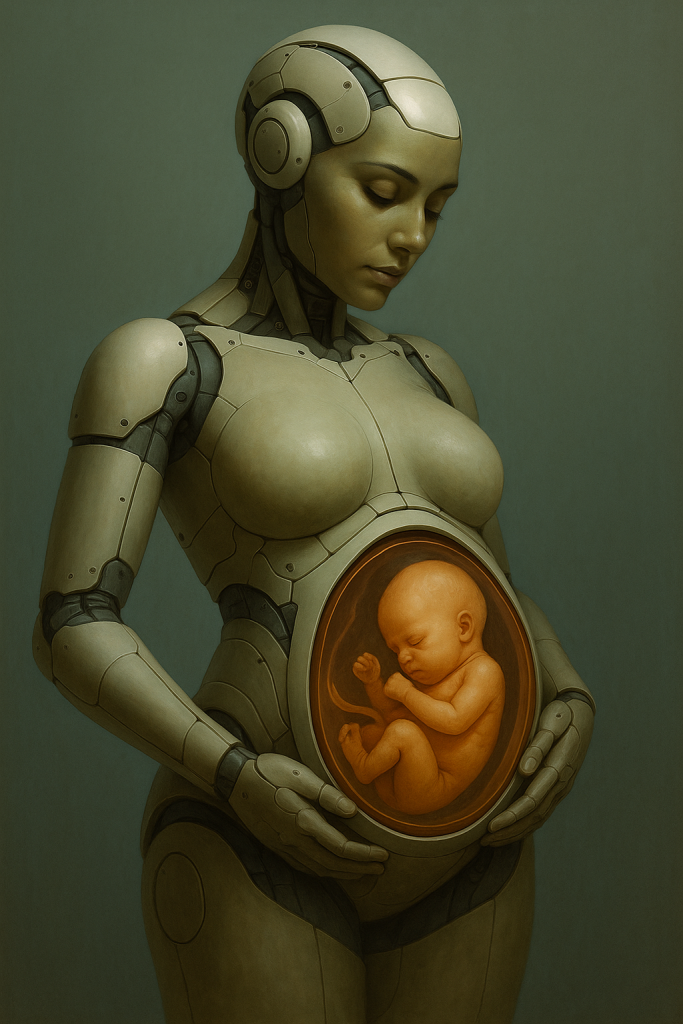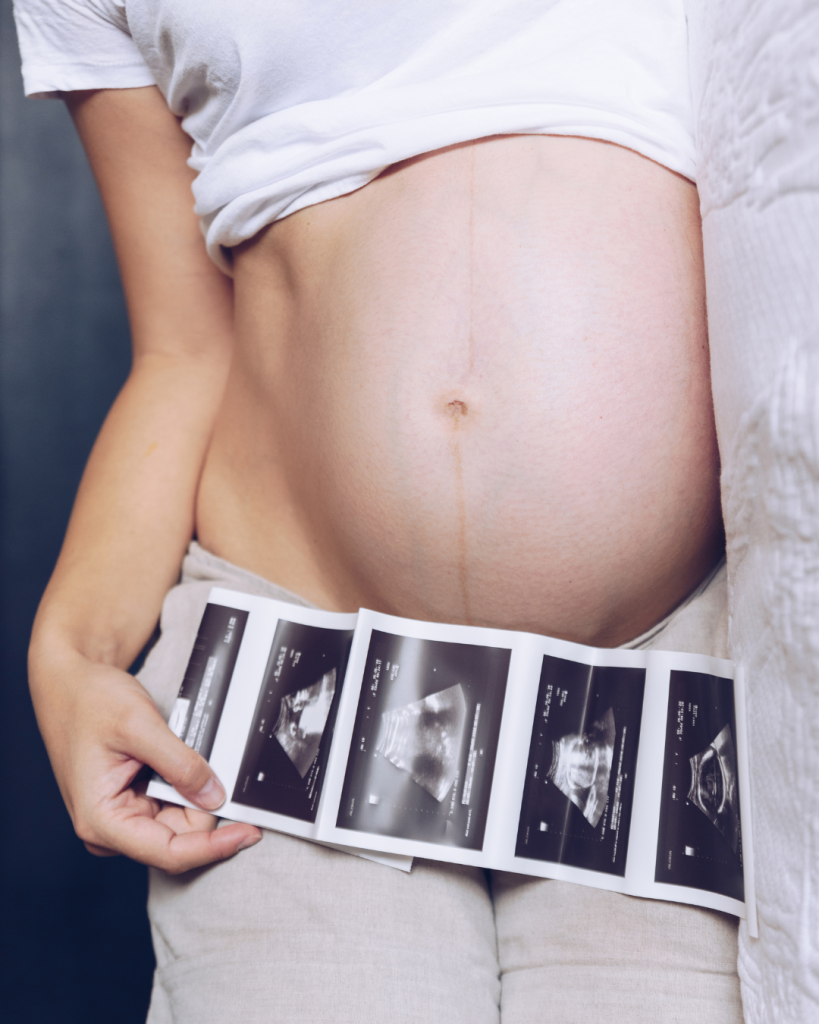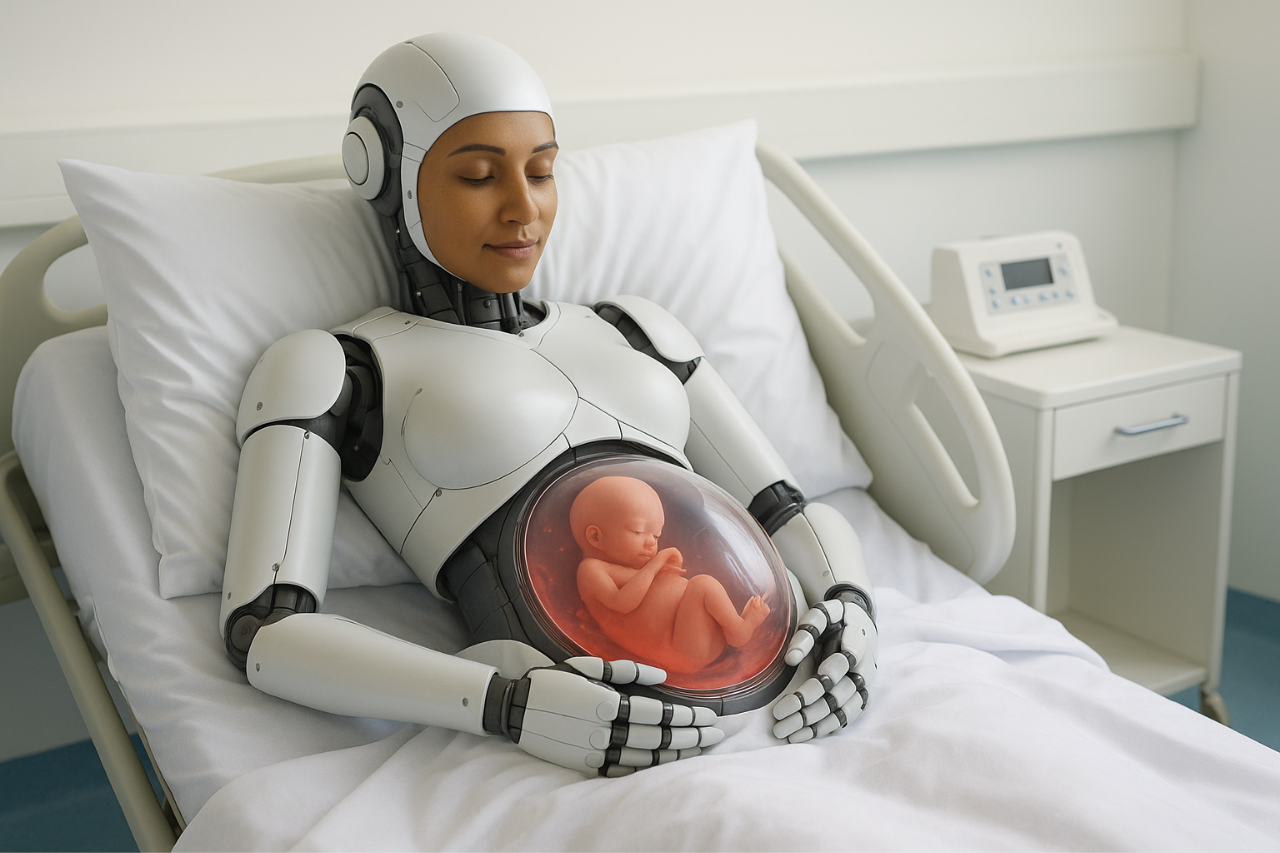The idea of pregnancy has always been inseparable from the human body. For as long as history remembers, carrying a child was both a physical experience and a deeply emotional rite of passage. Yet, in 2025, headlines emerged from China about a “pregnancy robot” designed to grow a baby to full term. The company behind it, Kaiwa Technology, claims it will have a working prototype by 2026, powered by an artificial womb embedded in a humanoid robot.
At first glance, this sounds like science fiction pulled straight from a dystopian novel. But as the details unfold, we are asked to consider a new possibility: what happens when motherhood itself is partially outsourced to machines? For women in midlife who have lived through pregnancy, childbirth, and the journey of raising children, this question cuts deeper than technical possibility. It challenges the very meaning of what it is to be a mother, and what society loses if machines replace one of humanity’s oldest experiences.
Pregnancy is not just about sustaining a fetus. It is about transformation. It changes the body, yes, but it also changes identity. Every kick, every sleepless night, and every ultrasound builds a bond between parent and child. Many midlife women can recall vividly the moment they first heard their child’s heartbeat or the mixture of fear and joy when they realized they were no longer just themselves but carrying the beginnings of another human being.
If robots can one day safely carry a baby, then pregnancy risks being seen as a biological service, stripped of its emotional and symbolic weight. For some, this may seem liberating. For others, it feels like erasure. The intimacy of motherhood could be reduced to a choice on a screen, a transaction that bypasses the lived experience of carrying life within one’s body.
One of the strongest arguments for artificial wombs and pregnancy robots is their potential to solve infertility struggles. Millions of couples worldwide face the heartbreak of failed IVF attempts, miscarriages, or health conditions that make pregnancy unsafe. For them, a safe artificial womb might seem like a miracle.
This technology could also protect women from the dangers of childbirth, which remains a leading cause of death for women in many parts of the world. Complications such as preeclampsia, gestational diabetes, and hemorrhage could be eliminated if machines take on the physical strain. In this sense, the idea has an undeniable appeal.
But progress does not come without questions. Who will have access to this technology? Will it be available only to the wealthy, creating new divides between who can afford “safe pregnancies” and who cannot? And if society normalizes machine pregnancies, will women who choose to carry their children be judged for taking on “unnecessary” risks?

Motherhood has always been steeped in rituals. Baby showers, listening to lullabies while rocking a swollen belly, mothers holding their children moments after birth — these are more than traditions. They are touchpoints of human connection.
If a machine takes on pregnancy, those rituals risk fading away. Parents might look through a glass screen instead of feeling a baby’s kick. The shared laughter of comparing cravings or the gentle complaints of swollen ankles may disappear. Even grandparents and siblings who often gather around to feel the movement of a new life would lose that bonding experience.
These rituals matter because they weave families together. They remind us that the journey to motherhood is as meaningful as the arrival of the baby. Removing that journey reshapes not just parenting but how families experience new beginnings.
For many Gen X women now entering or living in the empty nest years, this conversation feels almost surreal. When we had children, pregnancy was viewed as natural, expected, and deeply personal. Even with the rise of fertility treatments, the body remained the central vessel for creating life.
Now, the next generation may see something entirely different. Instead of months of shared waiting, they may watch pregnancy unfold through a machine’s monitor. Instead of cherishing scars, stretch marks, and stories of long labors, they may describe robot-assisted gestation as “the norm.”
This generational shift is not only technological but cultural. It mirrors larger changes in how younger generations view family, autonomy, and the role of technology in intimate spaces. For midlife mothers, the shift raises questions about whether future grandchildren will ever know the closeness of resting against their mother’s belly or hearing her heartbeat from inside.
Yet, while it is easy to grieve what could be lost, it is important to remember that motherhood has always been more than biology. Adoptive mothers, foster parents, and stepmothers know that love, care, and presence define parenthood far more than the act of carrying a child.
If pregnancy robots ever become real, they will not replace the need for nurturing, sleepless nights, or the endless decisions parents make in guiding their children’s lives. They will not replace hugs, bedtime stories, or the whispered prayers of mothers hoping their child will be safe and happy.

Still, the introduction of artificial wombs asks us to grapple with whether biology matters less than we once thought. If parenthood is redefined to exclude pregnancy, society must be ready to have difficult conversations about the meaning of family, the rights of children, and the boundaries of technology.
At the heart of this debate is choice. Technology often expands what is possible, but it also reshapes expectations. If safe, reliable pregnancy robots exist, will society begin to pressure women to use them? Employers might prefer it, reducing maternity leave and workplace disruptions. Insurance companies could push for it, framing natural pregnancy as “risky.”
The freedom to choose might slowly shift into a quiet coercion. Women who want to carry children may feel judged for putting themselves or their babies “in danger.” Others may feel compelled to use technology because it is more affordable or accessible.
Choice is only meaningful if it is protected from coercion. And in the world of reproductive technology, history has shown that women’s autonomy is often the first casualty when science moves faster than society.
Perhaps the most profound question is not whether a robot can carry a baby, but whether a robot should. Machines can replicate biology, but they cannot replicate humanity. They cannot sing to a child in the womb. They cannot carry the memories of generations of women who endured labor and passed down their stories. They cannot share the deeply human paradox of fear and joy that makes birth one of the most sacred events of life.
As women in midlife reflect on this emerging technology, there is room for both curiosity and caution. Curiosity about how science might ease suffering and expand possibilities for families. Caution about what is lost if we allow machines to take over the human experiences that shape us.
So, what happens when robots carry babies instead of mothers? The truth is, we do not yet know. Perhaps they will bring hope to families who thought parenthood was impossible. Perhaps they will shield women from danger. Or perhaps they will erode something essential about what it means to bring life into the world.
For mothers who have lived through pregnancy, the question is not just technical. It is personal, emotional, and generational. We know that childbirth is more than a biological process. It is a moment that transforms women, families, and communities. No machine, no matter how advanced, can replicate that.
In the end, the future of artificial wombs will not be decided by technology alone. It will be decided by what society values most: convenience, safety, equality, or the irreplaceable human bond between a mother and her child.
The company developing the humanoid robot pregnancy system with an artificial womb is Kaiwa Technology, based in Guangzhou, China. This groundbreaking concept was publicly presented by Dr. Zhang Qifeng (sometimes cited as Dr. Zhang Chipeng in certain reports) at the 2025 World Robot Conference in Beijing.
- Dr. Zhang described the technology as more than an incubator; this is a life-sized humanoid robot with an artificial womb embedded in its abdomen, designed to replicate the full gestational process from conception to delivery.
- Kaiwa Technology aims to unveil a working prototype by 2026, with an estimated cost of under 100,000 yuan(roughly USD $13,900–$14,000).
- Ethical and legal implications are already being considered. Dr. Zhang and Kaiwa have reportedly held policy discussions with officials in Guangdong Province, submitting proposals to support the technology’s development.

